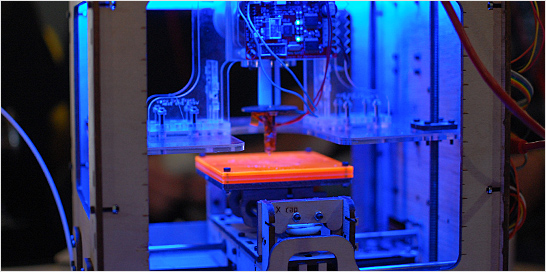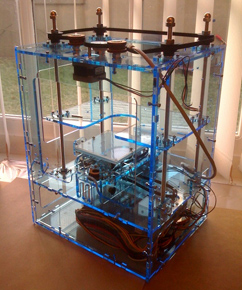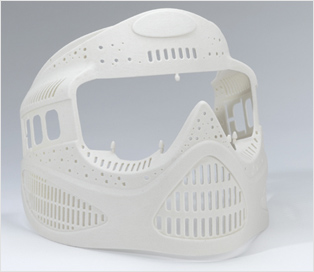
“It’s tough to make predictions, especially about the future.”
-Yogi Berra
We at Hexanine don’t pretend to know enough about this multifaceted, complex world to predict Big Things—like earthquakes, World Series winners (Cubs in 2010!) or what features the 2nd generation iPad will have. But once in a great while, the writing on the wall becomes clear. It seems that we’ve taken enough intelligent glimpses into the future of marketing and design to make an educated prognostication. The future will be in products.
Yes, it’s plainly obvious that we’re living in a world of overconsumption, overproduction and the desperate need to scale back planet-wide. This is where the products came in. But first, a little history.
The ’40s and ’50s ushered in an age of large-scale, mass production of consumer goods, which brought us the Golden Age of Advertising. You need to buy our stuff, the Ad Men said. Then Japan’s emergence as the creators of high-quality, mass produced electronics goods helped us soar into the Era of Personal Computers. Even the current deluge of miniature electronic and computer products owes its life to the availability of cheap parts (silicon, chips, etc) and manufacturing economies of scale.
But that is about to change. What seemed like science fiction just a few years ago is coming now to an office near you. Wired has also jumped onto this train trend (and have a great, big-picture take on the subject) but I’m talking more specifically about the industry we work in—that of products—marketing, strategic branding, and product design. That feeling of the ground swaying beneath you is a sea change about to emerge—with the potential to alter design and marketing forever.

3D That Would Humble Avatar
We’re talking about the affordable availability of 3D printing, and the future it promises. A quick primer: 3D printing (as it exists today) is the ability to machine and sculpt physical objects using plastic, wood and metal materials, based on 3D models. These types of equipment have been used for several years by industrial designers and manufacturers for rapid prototyping and model-building—but they’ve always been the domain of large corporations or universities because of their high cost. But the evolving technology is now cheaper and better, affordable enough for small businesses and serious hobbyists. Big companies are noticing this trend and plan to capitalize on this future, aiming to have 3D printing devices at your desk, taking space currently reserved for their 2D paper predecessors.
Sure, there are still strides to be made in material technology, and it’s a bit technical at the moment—but this technology is coming fast. If you will indulge us a small technological leap, there is an exciting future on the horizon. It’s not hard to dream what these kinds of capabilities will do to our world. Here’s what I see: In the same way that desktop publishing software changed the face of printing and graphic design, the availability of similar tools for marketing will change the face of the consumer and marketing worlds.
PIY (Print It Yourself)
Imagine a world where many “brick and mortar” shops are no longer dinosaurs—they’re literally extinct. The rising price of oil and fuels might make overnight shipping disappear someday, but who needs it? Why travel to Crate&Barrel to buy a new-fangled kitchen utensil when you’ll be able to hop on the C&B website and purchase the “printing rights” to one of 15 different styles, looks and models of utensil? You’ll be able to purchase and download one (or several) and print them out at home, in your consumer-grade Object Printer. Instant-instant gratification. No package design, no in-store displays or competition for shelf space. No physical point-of-purchase at all, in fact.
No More Manufacturing For You!
Because of this, many companies will find themselves squeezed out of the manufacturing process, with mass manufacturing evaporating. Manufacture-on-demand will rule the day. Organizations will have to shift gears and retool (no pun intended) for business of selling their intellectual properties. With the physical act of creation democratized, the real money-making venture will be in selling the “blueprints” of these products—with vast quantities of customizations, add-ons, and choices.

Product Designers As The Super Celebs
Re-enter the popularity of the Michael Graves Nation. With companies no longer limited by physical shelf space to sell you products, they will be able to reallocate the disappearing costs of manufacturing and shipping, sinking them into product design, R&D and licensing. Since the barrier to entry for product creation will be amazingly low (no overheads on manufacturing, warehousing, packaging, or shipping contracts), companies will have the capital to sign designers and celebrities to exclusive contracts for their future product concepts, tying up the rights to their intellectual property.
Marketing Will Have To Morph
Marketing will still exist, but it will completely change gears, because the arena of battle will change. Point-of-purchase, shelf presence, category differentiation and many of the other usual suspects of product packaging and marketing will morph into “virtual” turnarounds, models, and online presence (whatever form “online presence” takes in this future). Marketing will focus on minute differentiation since creating endless varieties will be affordable (order the Jonathan Ive iPad Gen6 rather than the standard Steve Jobs model), and emotional brand attachment will be even more important, since ubiquity has a way of making features less of a selling point. These designers will also have a more direct links to customers and fans, and the ability to make rapid, inexpensive changes to product models based on this feedback. The speed and immediacy of this communication/change loop would give current PR people whiplash. What other things might this mean for the way companies will market their products?
The Crowd As Its Own Source
But famous product designers won’t be the only ones to benefit. A new class of “user-generated” models will flood the market, in the same way that a flood of content came to the Internet via user-friendly blog software. Much of it will be crap, but with production tools at the disposal of end-users, and the accompanying software accessible to everyone, the Good Idea (and its necessary word-of-mouth) will be able to compete head-to-head with huge corporations.

The Micro-Niche
Also, these tools will help spawn a new niche market of super-specialized products and tools, as well as crazy-collectible offshoots of more widely-sold products. Want to make a profit in a market of only 2000 people? It will now be potentially worthwhile for anyone who sees a micro-need to fill it with a targeted product. Want a custom jacket for your Doctor Who action figure that only appears in the Terror of the Zygons Episodes? Done and done.
The End of Limited Edition?
In an era of “create-on-demand”, how will companies put limits on need and create scarcity? Will they resist the temptation to include some sort of Digital Rights Management to create artificial demand? Why would they need to, when production is taken out of the equation? With few extra costs, older product model lines will still be available for purchase (or illegal model trading/pirating), and customers will be able to pick and choose the models they want, whether it’s “yesterday’s model” or the latest and greatest. “New and improved” will have to mean true innovation if customers have access to a decade’s worth of product model releases—the best products will rise to the top (regardless of age or release date) and this single fact could have vast (and positive) environmental consequences—with a lot less wasted and discarded products.
There it is—the future, downloaded and printed on-demand.
MakerBot photo by maveric2003, used under Creative Commons license.
ipad tablet craze…
Awesome. This is a on the button good post. I learned this today and opined that I link to it…